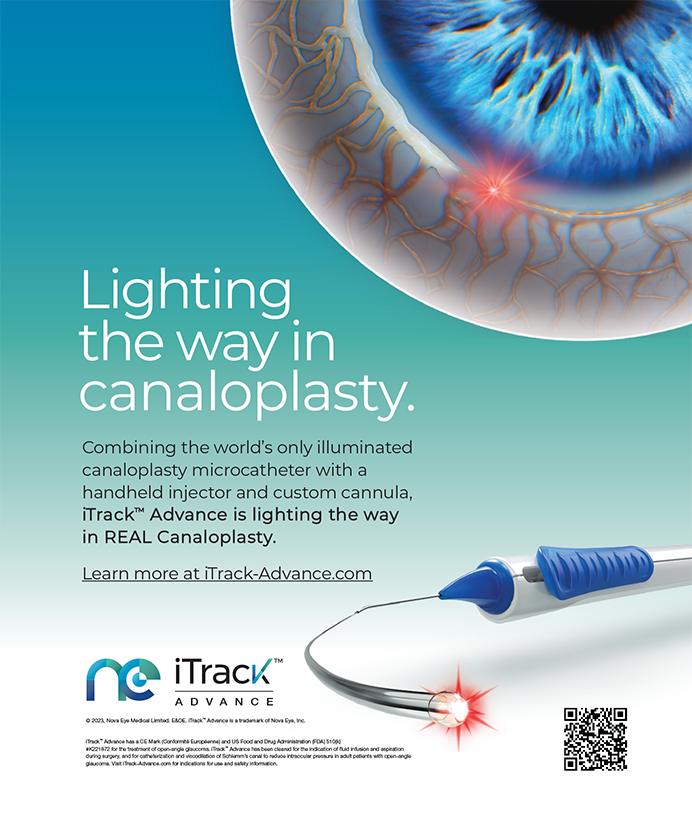
Chances are you have not thought too much about the degree to which your patients follow all of your recommended treatments once they leave your office. The traditional label compliance has given way to the currently preferred term, adherence. The latter does not imply passivity on the part of the patient or paternalism on the part of the prescriber. Adherence over time is referred to as persistence. The total time for which the patient is persistent is called persistency.1 If you have made it all the way to the end of this paragraph, you have demonstrated a lot of persistency.
Whatever we choose to call it, it is poor. Consider your patients with glaucoma whom you ask to administer an eye drop once before bedtime in each eye. The eye drop comes in a convenient little bottle, and it is typically fairly affordable. The eye drop has few side effects, and it has the potential to stop a potentially blinding disease process in its tracks. The data on adherence to prescribed regimens in glaucoma treatment, however, are quite poor.2 Many factors play into the degree to which patients follow a particular regimen, but even with once-daily dosing, adherence can be lacking.3 We physicians are often oblivious to this phenomenon, because adherence to a glaucoma regimen is frequently excellent during the few days prior to an eye exam.
Over 16 years ago, the first Age-Related Eye Disease Study (AREDS) demonstrated that nutritional supplementation could reduce the risk of developing advanced macular degeneration. Subsequently, the AREDS2 formulation was also shown to be beneficial. How many of our at-risk patients actually take their recommended supplements on a daily basis? People fear macular degeneration with good reason. Even though intravitreal injections have revolutionized the treatment of age-related macular degeneration, the prospect of regular injections is not particularly appealing.
Now consider less threatening conditions like dry eye disease and blepharitis. In their most severe forms, these conditions can have serious consequences, but they are typically more of a chronic nuisance. I suspect that adherence to daily regimens of artificial tears, lid scrubs, and warm compresses is poor among patients with these conditions as well.
It is worth noting that we are not the only ones nagging our patients. They are also advised to brush and floss their teeth, take all of their systemic medication, exercise, apply sunscreen and moisturizer, and eat the right foods in moderation.
If technology could allow people to escape their tendency toward poor persistency, it would be a welcome development. In eye care, we have seen an increased use of selective laser trabeculoplasty and microinvasive glaucoma surgery to reduce or eliminate the daily pharmacological treatment of glaucoma. Someday, we may place drug-eluting devices in the canaliculi to provide long-term medical management of glaucoma and other conditions. On the dry eye front, work is progressing on using intense pulsed light, thermal lid massage, meibomian gland expression, and in-office lid hygiene procedures to reduce patients’ need for topical therapy and daily home lid care. Some practitioners have even replaced the traditional postoperative drops for cataract surgery with intravitreal medications.
Legitimate physical, financial, or time constraints prevent some patients from achieving good persistency, but for many, there is a natural human tendency to resist adherence to any prescribed regimen. Perhaps this is a form of rebellion against the daily reminder of the disease process. Maybe it is an attempt to deny the inevitability of senescence. Whatever the cause, technology is aiming to save people from their poor persistence.
Steven J. Dell, MD
Chief Medical Editor
1. Osterberg L, Blaschke T. Adherence to medication. N Engl J Med. 2005;353(5):487-497.
2. Friedman DS, Quigley HA, Gelb L, et al. Using pharmacy claims data to study adherence to glaucoma medications: methodology and findings of the Glaucoma Adherence and Persistency Study (GAPS). Invest Ophthalmol Vis Sci. 2007;48(11):5052-5057.
3. Okeke CO, Quigley HA, Jampel HD, et al. Interventions improve poor adherence with once daily glaucoma medications in electronically monitored patients. Ophthalmology. 2009;116(12):2286-2293.




